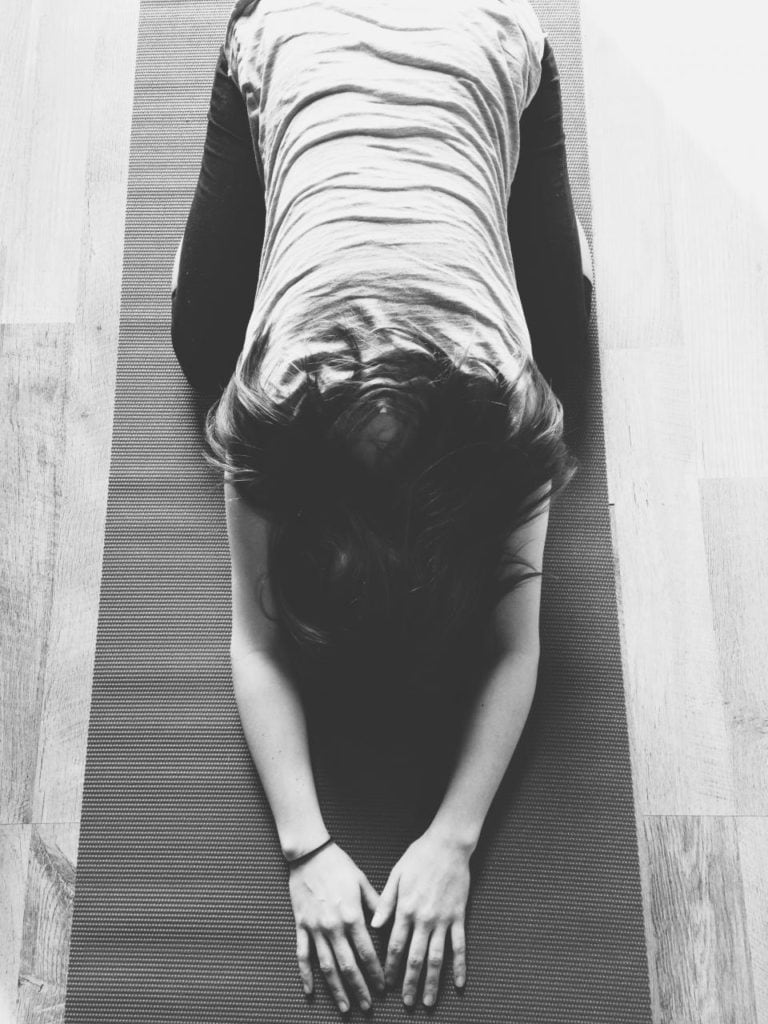Reverse Kegels – How To Relax Your Hyperactive Pelvic Floor
Reverse Kegels - How to Relax Your Hyperactive Pelvic Floor explains why more patients need to relax their PF instead of strengthening them

This is a reblog from Victoria Philip’s blog: Positively Pelvic.
Victoria is a pelvic floor physiotherapist who blogs about issues that we often don´t talk about, but yet are important – especially when you have problems in that area!
While the Kegel exercises seem to be the go-to exercise for any issues with your pelvic floor, Victoria argues that quite the opposite should be done
in quite a lot of cases. The reason is, that not everybody has a weak pelvic floor, but the pelvic floor can actually be over active.
Gotta admit here that I had quite some issues myself and while I had to run to the toilet about 10 times a day (as a guy!;)) I thought I could fix this issue with the classic Kegel exercises.
After this problem had gotten even worse through all the exercising, I finally signed up for treatment with a local pelvic floor physio here in Amsterdam.
While I did not like the idea of having a finger up my bum, the issue was pretty clear on the EMG: overactive pelvic floor (due to heavy lifting and holding breath a lot during those lifts according to the physio) and upon contraction, the physio congratulated me to the strongest pelvic floor he had ever seen in his practice hahaha…I am still proud of this one up until today!;)
But enough from my embarrassing personal stories, check out how you can actually relax your hyperactive pelvic floor with the “Reverse Kegels” – enter Tori:
Reverse Kegels?!
Reverse Kegels?! Say what? That is a thing? Yup. It’s a pretty powerful and wonderful thing in fact. One I love to teach patients ALL THE TIME. It is the opposite of tightening your pelvic floor – rather it is the lengthening of the muscles instead.
I think there is a big misconception out there that if anything is going wrong in your pelvis, then doing Kegels must be the answer to resolving the problem.
There is a big misconception that if anything is going wrong in your pelvis, doing Kegels must be the answer to resolving the problem
Sorry to say, but that’s just NOT TRUE. Poor bladder control; vaginal, prostate or rectal pain; pregnancy-related pelvic girdle pain, etc…can all be the result of TOO MUCH pelvic floor muscle activation. Doing more Kegel exercises, in that case, doesn’t make much sense. In fact, it can make your problem worse. So if you have been told to do Kegels and are finding that your symptoms aren’t resolving, and maybe even worsening…then it’s time to consider the Reverse Kegel (also known as pelvic drops).
Poor bladder control, vaginal, prostate or rectal pain, pregnancy-related pelvic girdle pain etc. can all be the result of TOO MUCH pelvic floor muscle actication
Get into one of my favorite yoga poses – Child’s pose (shown below):
You can use a pillow support under your belly if that feels more comfortable, but what you want to attempt is to allow your legs to separate while leaning back onto your heels. Reach forward as far as is comfortable and relax your head down to the ground. If your head cannot reach, place a pillow or yoga block under your forehead so your neck is relaxed. This should be comfortable so if it’s painful, alternatively, try lying on your back instead with legs wide and supported with pillows or resting up on a sofa.

Now in this position, imagine your pelvic floor as the “basement” of your pelvis; like a bowl that has openings for the urethra, vagina, and rectum. On each inhalation, take a deep diaphragmatic breath in, expanding your belly and not your chest. Imagine your air traveling all the way down into the bowl, filling it up. Let go of any tension in your pelvis on each inhalation. Imagine the bowl opening and expanding outwards. This position makes it much easier to get a sense of this expansion. It will feel gentle. Do not push down. Stay in this position for 2 minutes or try counting to 15 breaths, focusing on lengthening your pelvic floor on each inhalation as described above. If you do not have a good sense of this movement, it might not be that it isn’t moving, but that you do not have a very good brain-muscle connection here, so practice, practice, practice!
Orthopedic Physiotherapy of the Spine
Master Treating Spinal Conditions in Just 40 Hours Without Spending Years of Your Life and Thousands of Euros

So why do this?! Well, your pelvic floor is a postural muscle. We use it all day long. You would probably stretch after a workout, right? Okay maybe you don’t stretch but you wish you did ;). In my mind, it makes equal sense to pay respect and stretch our pelvic floors after a busy day on our feet, a particularly stressful day, or when our pelvic pain is acting up.
Give it a try.
Feel + Do Better.
Tori x

Victoria Philip
Pelvic Floor Physiotherapist
NEW BLOG ARTICLES IN YOUR INBOX
Subscribe now and receive a notification once the latest blog article is published.







